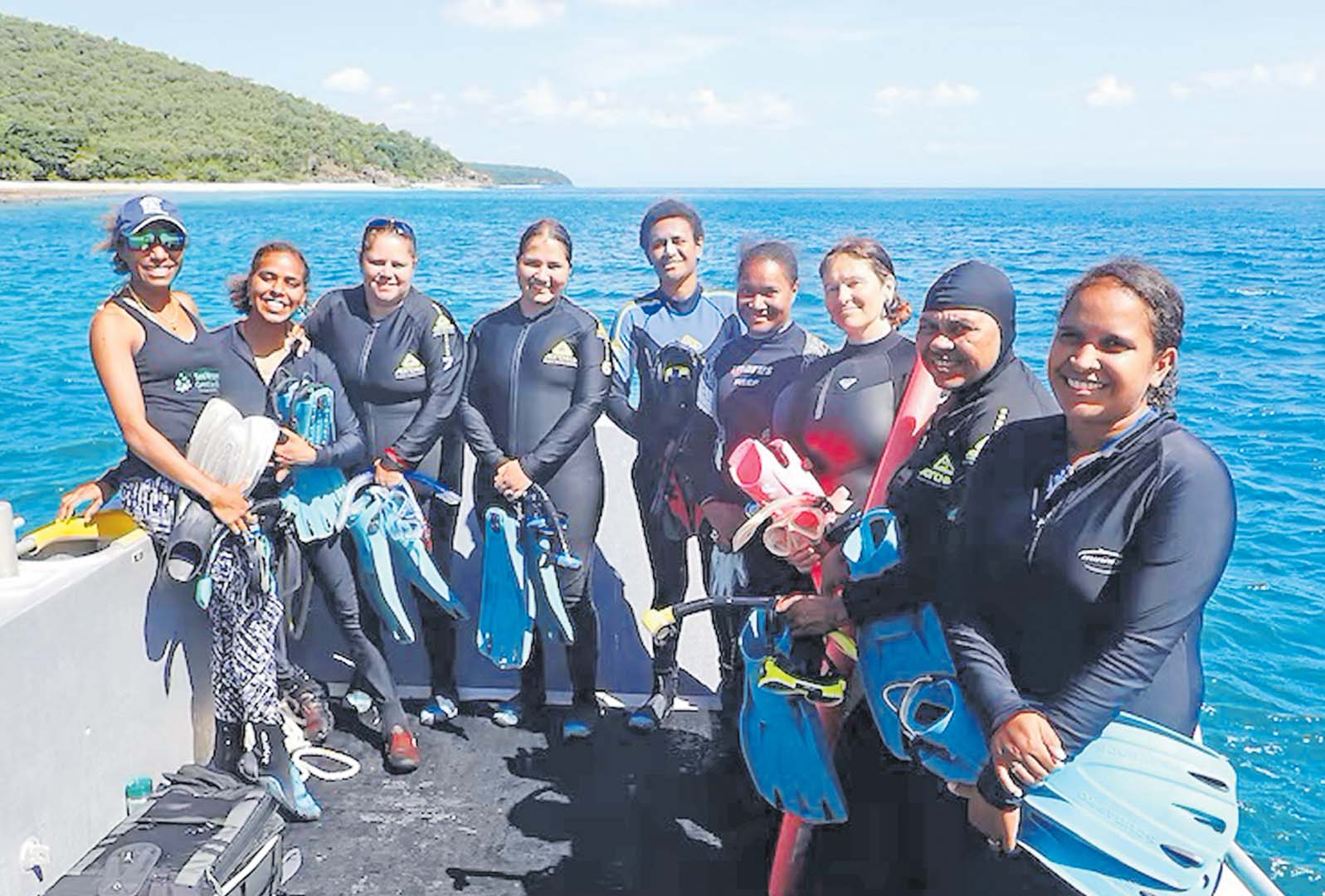It’s a stunning day in Far North Queensland as Mamu ranger Francis Joyce presses a pair of goggles to her face and dives into the sparkling turquoise ocean.
She’s met with a scene of bright coral and colourful fish darting and dancing around her.
This is the Great Barrier Reef, and she’s determined to protect it.
“You don’t have to go to uni and stuff like that to be able to do this kind of work. You can just give it a go,” she says.
Having worked as an Indigenous ranger on land, reef conservation is a new thing for Ms Joyce.
But two weeks into a training course, she’s captivated by the underwater universe.
“It’s like a whole other world,” Ms Joyce says.
“Being under the water, everything’s just so calm. You see the life and the different corals and the colours … they’re all growing together.”
Ms Joyce is one of eight women who make up the Sea Women of the Great Barrier Reef – a first-of-its-kind program that teaches Australian First Nations women to take a lead role in marine conservation.
They’ve been learning to snorkel, scuba dive, drive boats, take underwater pictures, identify marine species and survey coral reefs.
Ms Joyce plans to use these skills to educate others in her community and implement reef monitoring programs on Mamu sea country, south of Cairns.
“There’s hope that we can sustain our reefs … look after them for another 100, 200 years.”
Women training women
The program is inspired by a similar initiative – the Sea Women of Melanesia – which began in Papua New Guinea in 2018 and won a United Nations Champions of the Earth award three years later.
“The locals here (in Australia) wanted something similar to that to happen to their sea country,” says Sea Women of Melanesia director, Naomi Longa.
Women from the PNG program have come to train and mentor the Sea Women of the Great Barrier Reef, based out of Goolboddi (Orpheus) and Yunbenun (Magnetic) Islands in Far North Queensland.
Ms Longa says it’s one step towards a more ambitious goal of having Sea Women programs set up all around the Coral Sea arc – including Solomon Islands, Vanuatu and New Caledonia.
For her, protecting the reef is a matter of survival.
“Back at home, it is one of the main natural resources that people depend on for food, for income, for tourism activity,” she says.
“If we protect those coral reefs and marine environment, it’s going to provide food for us and for our future generations.”
It’s a sentiment shared by 22-year-old Torres Strait Islander woman, Ky-Lou Sagigi.
She says protecting the ocean is also about protecting culture.
“I think it’s important that I can spread that information towards my people.”
Hope for the reef
Snorkelling in protected zones on the Great Barrier Reef, Ms Sagigi says she’s been amazed at the health and variety of marine life.
As she emerges from the water after a dive, her excitement is palpable.
“It’s very eye-opening, that sense of what the ocean was meant to look like,” she says.
Home to more than 1600 species of fish and almost 500 types of coral, it’s one of the world’s most diverse marine ecosystems.
But the Great Barrier Reef faces a series of threats – from warming ocean temperatures, sediment run-off, plastic pollution and crown of thorns starfish.
UNESCO has twice recommended the marine park be listed as ‘in danger’.
Andy Lewis, director of the Coral Sea Foundation which started the Sea Women initiative, says reef monitoring is crucial to understanding how to preserve the natural wonder.
“I don’t like hearing the statement ‘the reef is dead’ for a number of reasons,” Dr Lewis says.
“What we need to know is how the reef and its recovery capability is coping with an increasing frequency of disturbance.”
Data collected during the Sea Women program has been uploaded to the Australian Institute of Marine Science ReefCloud system, where it is analysed using artificial intelligence.
“In that whole picture of how we look after reefs, the voice of the First Nations traditional owners is very, very important,” Dr Lewis says.
And with more than 70 applications for the Great Barrier Reef program, there’s clear demand.
“It just goes to show that there’s a lot of interest amongst First Nations women to access this sort of training.”
Comparing cultures
Naomi Longa says women involved in the program have bonded over more than just coral.
“Things like totems – they have their own totems and we have our own totems. And when we started to talk about it, we found out about a lot of similarities,” she says.
She hopes the experience will inspire others to get involved.
“A team of women working together, a lot of good things will happen,” she says.
Mamu ranger Francis Joyce already has plans to pass on her newfound passion.
“For me to be able to bring that out of myself is something very special,” she says.
“I can’t wait to show my nieces and get them into it.”
• MARIAN FAA is a journalist in the ABC’s Asia Pacific Newsroom, telling stories with a focus on the Pacific. The views expressed in this article are the author’s and do not necessarily reflect the views of this newspaper.



